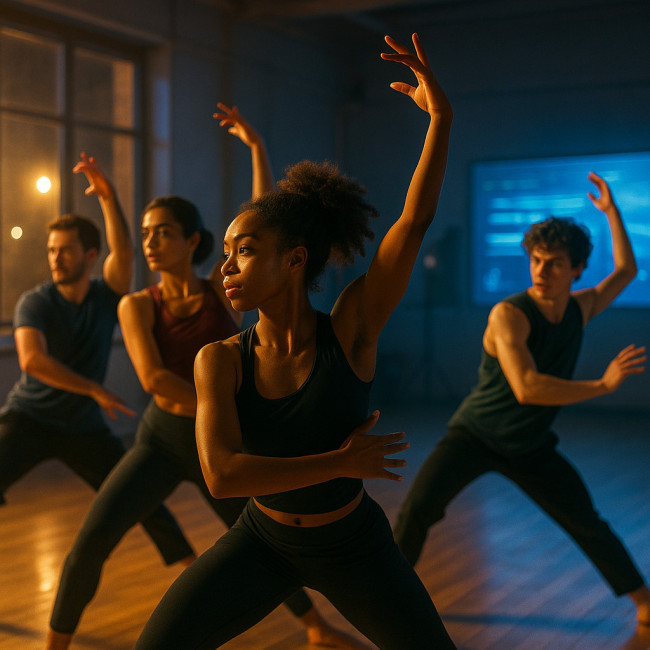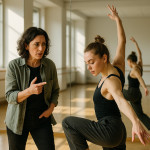External dance conservatories: select a 2025 syllabus that sharpens technique
Looking to level-up your artistry without quitting paid gigs? An external dance conservatory lets you plug world-class training into a freelance lifestyle. This guide breaks down how to choose a 2025 syllabus that hones technique, fuels creativity and positions you for bigger contracts.
Why pick an external conservatory in 2025?

External dance conservatories deliver the rigour of full-time academies while respecting your current work schedule. Curricula are compressed into evening, weekend or short-term intensives. You continue earning, keep agency over gigs and still benefit from expert faculty, cutting-edge studios and industry networking.
Define your growth priorities first
Start with a clear goal: sharper pirouettes, advanced floor work, or choreographic voice? Your focus shapes the syllabus mix you need. Pair this reflection with a quick skills audit. Record yourself, assemble a showreel and compare it with casting briefs you target. Gaps jump out fast.
Technique versus versatility
Some conservatories drill one style—ideal if you're aiming for classical ballet auditions. Others rotate through multiple genres per term. For commercial dancers who jump from music videos to theatre, versatility pays the bills.
Intensity and injury risk
Condensed programmes mean more hours per day. Build stamina beforehand with cross-conditioning classes so your body copes with double turns and eight-hour rehearsals.
Five reputable external conservatories compared
| Conservatory | Location | Programme length | Main strengths | Ideal for |
|---|---|---|---|---|
| Peridance Center | New York, USA | 4–12 weeks modular | Contemporary, hip-hop labs, choreography incubator | Dancers seeking agency reels that book music-video jobs |
| Rambert School Extension | London, UK | Saturday conservatoire (Sept–June) | Ballet foundations fused with Cunningham technique | Performers pivoting from jazz to contemporary companies |
| Zurich Dance Masters | Zurich, CH | 3-week summer intensive | European guest faculty, audition simulation evenings | Dancers prepping for continental contract seasons |
| Alvin Ailey Independent Study | New York, USA | Credit-based evenings | Horton, Graham and strong conditioning labs | Professionals updating modern technique without leaving tours |
| Amsterdam Global Choreo Lab | Amsterdam, NL | 6-week lab | Interdisciplinary creation, motion-capture experimentation | Artists merging stage and digital performance |
Key syllabus components that matter in 2025
1. Data-driven technique feedback
Motion-tracking wearables measure joint angles and jump height. Look for modules that provide weekly performance analytics so you can quantify progress instead of guessing.
2. Digital performance literacy
Many auditions require self-tapes filmed against green screen. A strong syllabus now integrates on-camera technique, lighting know-how and export settings that match talent-directory requirements.
3. Injury-prevention science
Ask whether physiotherapists or sports scientists teach sessions on fascia release, nutrition and sleep cycles. Programmes that skip this often see higher dropout rates.
4. Industry networking
Panels with company directors, casting agents and touring producers convert class time into job leads. Verify guest lists before enrolling.
Cost and funding checklist
- Tuition versus studio fees: some centres quote only teaching hours. Confirm extra rental or costume costs.
- Scholarships: tap into funding channels months before application deadlines.
- Work-study: cleaning studios or front-desk shifts can offset 30–50 % of fees.
- Travel visas: international dancers should cross-check paperwork timelines with specialised visa guides.
Application strategy that gets you accepted
Curate a targeted reel
Edit clips that match the school's dominant style. For Alvin Ailey, lead with Horton combinations. For Amsterdam's lab, feature concept improvisation.
Write a concise artist statement
Schools read hundreds of applications. Use active verbs and one clear career goal: “I aim to merge contemporary floor work with on-camera storytelling for streaming musicals.”
Plan ahead for auditions
Many centres now offer rolling video submissions. Others require in-person classes four months in advance. Track all dates in a shared calendar.
Integrate study with paid gigs
External conservatories thrive on flexibility, yet double bookings still happen. Sync your rehearsal calendar with course modules and build buffer days. When contract clashes can't be avoided, negotiate remote catch-up sessions via the school's learning platform.
Case study: Mia's eight-week technique boost
Mia, a Los Angeles-based freelancer, chose Zurich Dance Masters. She staggered three weekend commercials around the intensive by:
- Booking flights that landed before Monday's 10 am technique class.
- Streaming missed floor-barre via VR replay in her hotel.
- Uploading corrected phrases for tutor review within 24 hours.
Results? Mia increased adagio control (measured via wearables) by 18 % and landed a European tour contract two months later.
Red flags when reviewing programmes
- Faculty bios without verifiable performance credits.
- No mention of injury-prevention or health support.
- Hidden studio maintenance or costume fees.
- Outdated tech—no HD capture, no motion-tracking feedback.
Leverage alumni networks
Reach out to recent graduates on social media. Ask about tutor engagement, casting leads, and scholarship transparency. Solid alumni networks often share audition notices first, giving you a head start.
Next steps after graduation
Completion certificates are just the beginning. Upload fresh footage to your dancer profile, submit to casting calls through professional dancer directories, and pitch for upcoming seasons while momentum is high.
FAQ
- How long should an external conservatory programme be to see real progress?
- Six to eight intensive weeks or a nine-month part-time cycle usually deliver measurable technical gains without burnout.
- Can I keep my current dance contracts while attending?
- Yes, but sync calendars early and use remote class replays to catch up on missed sessions.
- Are scholarships common for external programmes?
- Many schools reserve 10–25 % of spots for need- or merit-based aid. Apply at least three months ahead.
- Do I need a study visa?
- If the course exceeds 90 days or offers academic credits, most countries require a visa. Short intensives may allow tourist entry, but always confirm.
- What equipment do I need for digital modules?
- A laptop with 8 GB RAM, a 1080p webcam, stable Wi-Fi and basic ring light covers 90 % of online feedback requirements.
Ready to leap?
Choosing the right external dance conservatory can recalibrate your artistry and income trajectory. Define your goals, vet each syllabus and secure funding early. Then step into the studio—and emerge with technique that books 2025's most coveted stages.
Take action: shortlist two programmes tonight, mark application deadlines and message alumni for insider tips.











